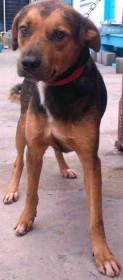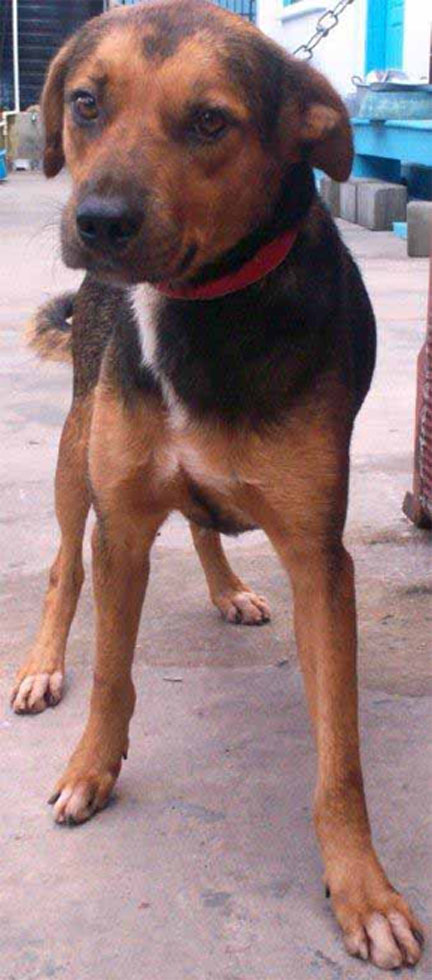
In spite of TV shows, booklets and columns such as these, many pet owners still feed their wards incorrectly, and do not follow proven nutritional advice. One such lapsus is the feeding of bone chips (especially chicken and mutton bone splinters). The jagged fragments of the bone (or any other sharp object, for that matter), having passed through the tube (oesophagus) between the mouth and the stomach, will usually not stick in the intestines as it wends its way towards the exit as part of the faeces. It can, however, lodge itself at the end of the rectum. There, in the anal area, an inflammatory condition will develop – with much pain. The animal will obviously not wish to defecate. A constipation develops.
I should mention that any stimulus which creates pain in the rectal/anal area will result in the unwillingness to void stool. In this category could be listed bee-stings, maggot infestations and the like.
The symptoms of proctitis, besides the non-voiding of stool, would be in the rubbing of the anus on the ground (‘scooting’), and licking and biting of the rear end.

The treatment would correspond with the cause. For example, if a bone is stuck at the exit of the rectum, then it must be removed, digitally if possible and under local or general anaesthesia if necessary. Similarly, if there is a maggot infestation in the anal area, the maggots must be removed. Anti-allergy/anti-inflammatory/analgesic (soothing, pain killing) preparations could be used, if we are dealing with an insect bite or if there is an obvious redness/swelling in the area. Supportively, you should place your pet on a bland diet of small quantities, or even withdraw solid food altogether for 24-36 hours. Actually, I get the best results by offering the patient a thin but nutritious soup (broth), during the healing/recuperative period.
False constipation (pseudo-constipation)
This is a form of voluntary retention caused by an inflammation of the anus. It is common in long-haired dogs. Soft stool matts in the hair around the anus, causing a barrier. The skin becomes irritated, tender and infected. Dogs with this problem try to defecate while standing. Other signs are whining, scooting, and biting at the rear. The odour is extremely offensive.
Treatment
Dogs with long coats should be groomed around the anus to prevent the build-up of that stool/hair mixture at the anus. When present, clip away the matted hair to let air get to the skin. If it is weepy-looking (wet eczema), apply a topical antibiotic ointment. Let your vet advise you about the introduction of a general antibiotic/anti-inflamatory regime to deal with the infection and the soreness.
Protrusion ofanal tissue (anal and rectal prolapse)
With forceful and prolonged straining, the dog can push out the lining of his rectal part of the intestine. This is a partial prolapse and is confined to the surface membrane. In severe cases, a complete segment of intestine may drop down; it is then called a complete rectal prolapse. It can be as long as several inches. The difference is quite evident on examination. Protrusion of anal tissue might be mistaken for haemorrhoids which really do not occur in dogs.
Simple anal prolapse is easily treated at home, but depends upon correcting the cause of the straining. Apply a topical anaesthetic (Benzocaine ointment) to reduce pain. Treatment is the same as proctitis (see above).
A complete rectal prolapse can be replaced manually. Clean the tissue and lubricate it with vaseline. Then gently push it back up through the anus. To prevent recurrence, usually it is necessary for your veterinarian to make a temporary purse-string suture around the anus to hold the rectal part of the intestine in place while healing is on going.
Please implement disease preventative measures (vaccinations, routine dewormings, monthly anti-heartworm medication, etc) and adopt-a-pet from the GSPCA’s Animal Clinic and Shelter at Robb Street and Orange Walk, if you have the wherewithal to care well for the animals. Do not stray your unwanted pets, take them to the GSPCA’s Clinic and Shelter instead. If you do not wish your pet to have puppies or kittens, you may exploit the GSPCA’s free spay and neutering programme. If you see anyone being cruel to an animal, or if you need any technical information, please get in touch with the Clinic and Shelter by calling 226-4237.

